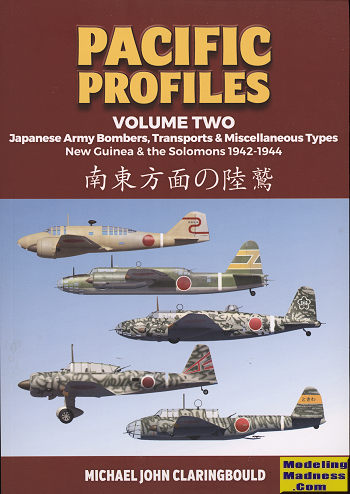 The
air war in the Pacific was unlike war in Europe or North Africa. The Pacific war
was a battle over islands that were separated by fairly large stretches of
water. There were not large armadas of bombers nor was the fighter opposition
very large either. The Japanese were constantly plagued with a poor supply line
that often meant no spares to get planes up. For the Allies, missions meant long
periods of time over water, not a very friendly area in which to be forced to
ditch.
The
air war in the Pacific was unlike war in Europe or North Africa. The Pacific war
was a battle over islands that were separated by fairly large stretches of
water. There were not large armadas of bombers nor was the fighter opposition
very large either. The Japanese were constantly plagued with a poor supply line
that often meant no spares to get planes up. For the Allies, missions meant long
periods of time over water, not a very friendly area in which to be forced to
ditch.
The southwestern theater of operations was, for the
Japanese, had various areas given to either the Army or the Navy to provide air
support. The Solomons were delegated to the Navy and New Guinea to the Army. Of
course, there was some intermixing as this was inevitable. It is not surprising
that the IJAAF was not exactly happy about having to operate in New Guinea as
none of their aircraft were designed for the hot and humid climate that they
found there. They
realized that the conditions there were minimal for aircraft operation and the
pathetic supply situation was something that plagued the Japanese throught the
war.
This book covers IJAAF bombers, transports, recce, and
miscellaneous aircraft during the time they
were operating in New Guinea from 1943-44. As such, this meant types such as the
Ki-21, Ki-48, Ki-49, Ki-15, Ki-51 and other aircraft types. While some aircraft
had a fairly successful history in theater, others proved to be quite inadequate
for the conditions. Types such as the Ki-48 were lacking in range and bomb load.
In addition, they were fairly slow so were unable to deal with Allied fighters.
The Ki-49 was even worse with all sorts of mechanical issues in addition to
being fairly slow. Transports had a fairly successful time of it as they were
infrequently based there permanenty, though they did get caught on the ground
from time to time. Recce types also did fairly well, again, because they
operated at altitude and were difficult to catch.
What makes this a book that I really liked about this
book is that in addition to a nice general background history of the air war in
this region, it goes unit by unit in terms of the aircraft used, the various
personalities and a brief history of each unit's time in theater. This is a
great book in terms of looking at the various camouflage schemes worn by these
aircraft as well as information on the unit markings. Unlike the Germans, the
Japanese did not keep photos taken during the war and so finding images of the
various unit markings/schemes is mostly from US images taken when the Allies
overran Japanese air bases. Each unit has at least a half dozen full color
profiles of each unit's aircraft, all based on extant photographs.
It is a book that will definitely be used over and over
again for reference. This is book that modelers will find extremely useful. I
very much look forward to additional volumes and I can most highly recommend
this one to you.
April 2021
Copyright ModelingMadness.com. All rights reserved.
Review book courtesy of
Casemate Publishing. You can get your
copy from
this link.
If you would like your product reviewed fairly and quickly, please
contact the editor or see other details in the
Note to
Contributors.
 The
air war in the Pacific was unlike war in Europe or North Africa. The Pacific war
was a battle over islands that were separated by fairly large stretches of
water. There were not large armadas of bombers nor was the fighter opposition
very large either. The Japanese were constantly plagued with a poor supply line
that often meant no spares to get planes up. For the Allies, missions meant long
periods of time over water, not a very friendly area in which to be forced to
ditch.
The
air war in the Pacific was unlike war in Europe or North Africa. The Pacific war
was a battle over islands that were separated by fairly large stretches of
water. There were not large armadas of bombers nor was the fighter opposition
very large either. The Japanese were constantly plagued with a poor supply line
that often meant no spares to get planes up. For the Allies, missions meant long
periods of time over water, not a very friendly area in which to be forced to
ditch.